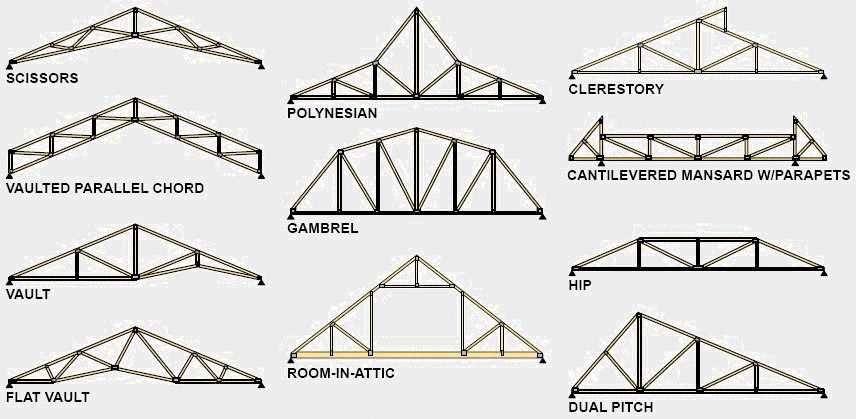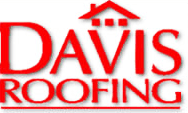When considering the types of roof trusses for your building or remodeling project, you will discover that many different styles are available. From the most simple to the extremely complex, there are types of trusses available to suit the needs of any project.
Using roof trusses increases efficiency and production in constructing a home. Roof trusses offer a less labor-intensive option than conventional framing, which can save a lot of time in the building process.
Contents
Simple Types of Roof Trusses
Some of the simplest types of roof trusses are the King post, Queen post, Fink, Howe, and Fan roof trusses. These types of roof trusses all have the traditional triangular roof shape, with various types of added support depending on the needs of the structure. They are composed of anywhere from two to seven triangular shapes within the main truss itself.
Some of the more complex types of roof trusses are the Double Fink, Double Howe, Scissors, and Cambered roof trusses. All but the Scissors roof truss have the traditional triangular roof shape, but with a more complex supporting design. These are composed of anywhere from six to 10 triangular shapes, not including the main truss frame itself. The Scissors truss is different in that the bottom of the truss is also angled upward, rather than flat like the others mentioned.
Even more complex types of roof trusses are available as well. The Monopitch, Inverted, Stub, and Sloping flat trusses all provide roof shapes that are slanted to one side only. The Flat design is a type of roof truss that provides a completely flat roof with no angle at all.
The Bowstring, Gambrel Roof Trusses, Stepdown Hip, and Hip Girder are types of roof trusses that give the outer appearance of a curved roof, rather than being angled or flat.
The Polynesian and Cathedral types of roof trusses are among those designs that give a more decorative and unique look to the roof, and at the same time give a more decorative look to the interior of the house, depending on the design used.
The Attic roof truss is exactly as its name implies: a type of roof truss meant to be used in an attic. It provides a large amount of space, giving you the room for extra insulation and plenty of storage space, or even a small attic apartment.
Common Types of Roof Trusses

Dropped Chord Truss
One of the most popular types of roof trusses is the dropped chord truss. This type of truss is a bi-sectional design that uses primary and secondary trusses to prevent the roof from rising up. If a roof were to rise there could be significant damage done to the walls and the ceiling of the home. Using a dropped chord truss can prevent this type of damage from occurring. People that live in an area that experiences tornadoes, hurricanes, or strong gusts of winds would benefit from using this type of truss.
Raised Heel Roof Truss
The most energy efficient type of roof truss is the raised heel roof truss. This is one of the most common types of roof trusses because it allows the most room for insulation and also provides an excellent structural support system. The raised heel roof truss is often more expensive than other types of roof trusses and they also require additional materials as the exterior sheathing wall has to be extended to accommodate the truss. This adds to the cost of the home construction, but using this type of truss will reduce the cost of energy bills, allowing the homeowner to recoup the costs.
Parallel Chord Roof Truss
For homeowners that are on a strict budget, the parallel chord roof truss is one of the least expensive types of roof trusses. This type of truss uses chords on the top and bottom and does not require a bearing wall or beam. The chords that are used in this truss are made from full pieces of wood, rather than smaller pieces of wood. For this reason, there is less labor and time involved in making the parallel chord truss, which results in the cost of the truss being lower. The pro of this truss is the cost, but the con is that attic space is given up.
Scissor Roof Truss
Frequently used in cathedrals, the scissor truss offers a vaulted ceiling design. These roof trusses can be put together as quickly as any other type of truss and does not require a bearing wall or beam. However, using this type of roof truss leaves less space for insulation than other types of truss designs. For this reason, the scissor roof truss is less energy efficient. The benefit is the vaulted ceiling in the home that results in its use.
Choosing Types of Roof Trusses
Many of these types of roof trusses can be used together within a single home or business, enabling you to design your project exactly the way you would like it to be. Roof trusses can be customized to accommodate for space or support requirements, giving different areas of your home or business its own unique look on the interior, while keeping a consistent design and appearance to the exterior of the project.
A consultation with a professional roofer or contractor is probably necessary to determine which types of roof trusses are the right choice for your building or remodeling project. Roof trusses not only provide uniqueness to the design of your rooms, but also provide support for the structure of the building. It is important to use types of roof trusses that will accommodate the structural needs of your project, offer the best energy efficiency, as well as defining the look you want to achieve.
